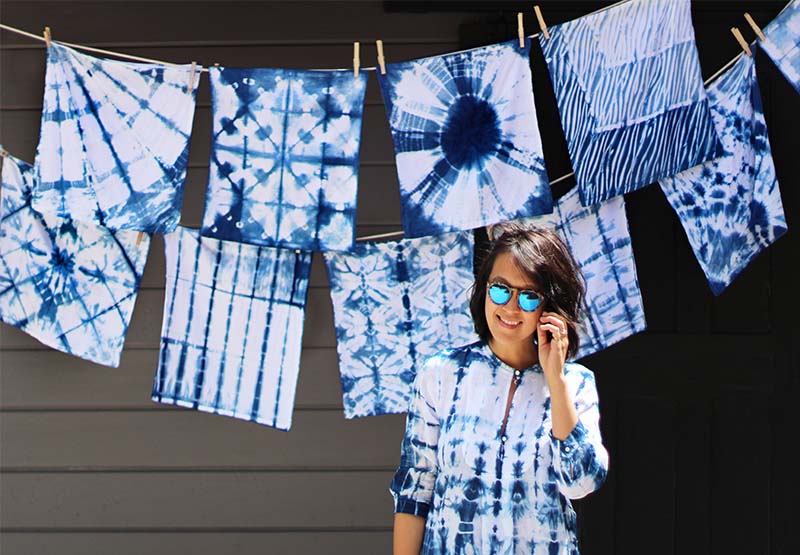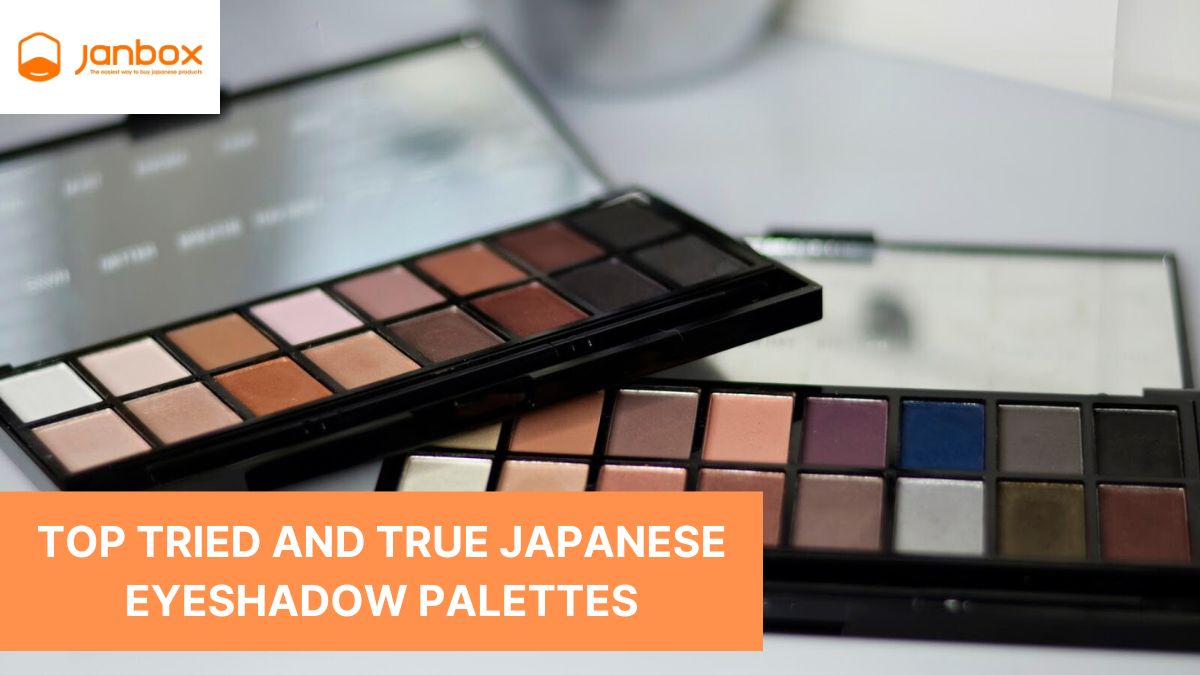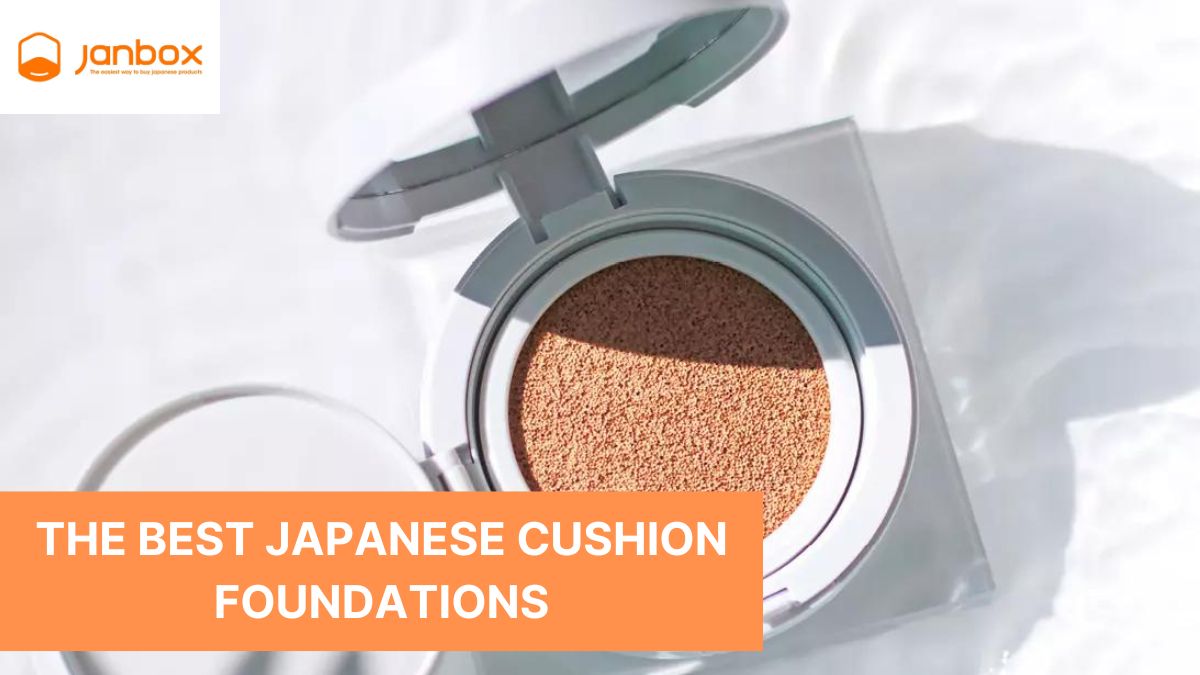The color known as “Japan Blue” or the Japanese indigo dye has gained popularity all over the world. The Japanese indigo dyeing technique is a key component of Japanese style, design, and fashion because of its strong richness, durability, and natural qualities. The cultural background of Japanese indigo dye is extensive. Japanese indigo dyeing, often known as “Aizome” or “Japanese Blue,” is an essential aspect of the history of the country and of Japan.
The manufacture, processing, and application of Japanese indigo dye have been done in Japan for millennia and date back to the 10th century. Japanese indigo dyeing has developed into a reputable artisanal sector that employs families and companies with decades of experience.
I. How is Japanese Indigo Dye made?
Worldwide, a variety of plants have been used to produce this “farm to closet” hue, but in Japan, the blue dye is derived from the Persicaria Tintoria plant. The vivid blue Aizome dyeing technique was perfected by indigo dyers during the 17th century. The production of indigo dye requires two primary steps: first, the dye is made; second, the materials are dyed.
The typical blue color of indigo takes about a year to develop on the plant, which initially has green leaves. There are several ways to extract anything, but in Japan, fermentation of the leaves is the most popular approach. The following steps are included in this manufacturing process:
- India muslin enzyme is introduced to a fermenting tank along with the freshly gathered leaves.
- Indican in plant leaves is hydrolyzed by the enzyme, and indoxyl is released into the surrounding fluids. To allow the procedure to finish, it is let to sit for a few hours.
- Using paddles, the resultant liquid is then combined with air, where the air reacts with oxygen to produce the pigment.
- The liquid’s top layer is then scraped off, revealing the pigment as a blue sludge at the bottom of the container.
- To prevent further fermentation, this sludge is immediately heated. After that, it is dried to create a thick sauce or powder. The dye used to color textiles is this one.

Depending on the quantity of fermenting, the product being used such as Japanese Indigo dyed clothing, the dyeing duration, the actual Aizome dyeing process, and the Japanese Indigo dye kit can produce a wide range of blue hues. The solution itself seems black, but because of exposure to air when drying, the cloth becomes a distinctive hue of blue.
The blue color deepens as the number of dips increases, and each shade is given a different name. While Noukon indigo is the darkest tint closest to black, Aijiro indigo is the lightest tone nearest to white. The Tokyo Skytree, whose body is Aijiro-colored, is a fantastic illustration of an indigo landmark.
>>> Read more: Top 20 Best Japanese Denim Brands To Shop Now [Guide 2022]
II. Instructions for using Japanese Indigo Dye
Japanese indigo dye is highly appreciated for both its aesthetic appeal and its more useful properties. Both of these justifications apply to the dye’s use in garments. Indigo dye is a favorite of clothing designers and denim manufacturers because, unlike poorly made chemical colors, it improves with age. Because indigo is organic, it matures like leather rather than fading to a worn-out appearance. Indigo is a special basis for beauty and skincare items like soaps due to its antibacterial properties.
Aizome Sekken, a handcrafted soap created in the indigo-rich region of Tokushima, is a great illustration of one of the best indigo soaps. In essence, though, the uses for this dye are only constrained by one’s creativity.
Japanese indigo dye has several inherent qualities that raise its quality in addition to being stunning to look at. Japanese indigo dye is utilized as a base in beauty items like soaps because of its anti-bacterial qualities. It used to be a common option for firefighter apparel due to its flame-retardant qualities. Those blue items dyed with Japanese indigo also acquire this quality. Japanese indigo dye was integrated into the design of the iconic Tokyo Skytree, a common addition to blue items.

Japanese indigo dye is a superb option for clothing as well as other textiles because it naturally repels dirt. Japanese indigo dye is considered one of the greatest options if a blue item is required, and it is widely used in Japan. The many color options provide buyers with a range of price points as well. Those on a budget can afford and obtain lighter hues more easily.
Japanese indigo-dyed jeans are highly well-liked there. If properly maintained after purchase, jeans can last for many years. Whether it’s on clothing, cushion covers, pottery, or structures, naturally derived indigo dye gets prettier with age.
Japanese indigo dye has a long history of being associated with regional businesses and handicrafts. Although there are fewer people now making and producing Japanese indigo dye, it is still a favorite among people from all social classes. When grown utilizing traditional methods, Japanese indigo dye is produced without the use of any synthetic components.
Japanese indigo dye continues to play a crucial role in the nation’s fashion industry because it is functional, natural, and aesthetically pleasing. People all around the world are thrilled about clothing and other items that have been colored blue with Japan’s indigo dye as a result of its meteoric rise in popularity. Additionally, attractive design methods have been created to enhance the already stunning indigo dye, such as the well-known Shibari art form or the use of Japanese indigo dye in tie dyes.
III. Types of Traditional Shibori Techniques
In the West, some types of indigo dye techniques or Shibori are now referred to as tie dye. There are countless ways to shape the Japanese Indigo dyed fabric before dying it, and there are six main shibori techniques, each of which is intended to produce a particular outcome.
1. Arashi Shibori

This method, also called pole wrapping shibori, entails tightly twisting and wrapping the fabric around a wooden or metal pole in a diagonal pattern. Before dying, the material is next securely tied with thread. Arashi is the Japanese word for “storm”, and Arashi shibori uses irregular, contrasting diagonal lines to produce patterns that can mimic stormy seas or strong winds.
2. Itajime Shibori

The folded cloth is sandwiched among both two wooden pieces to create the shaped-resist shibori effect. This restricts the dye’s penetration to the folded cloth’s edges, leaving strikingly colored areas of the fabric when it is unwound.
3. Kanoko Shibori

Shibori in this style resembles traditional western tie-dyeing the most physically. By tying tiny, pinched pieces of the fabric together, circular patterns are produced with this technique. Because each thread is tied by hand, the shapes that are produced have intricate variances. Before binding, the cloth can be folded, which can be used with varying tensions and tying sites to produce various designs.
>>> Read more: Maekake Japanese apron: Everything you need to know (2022)
4. Kumo Shibori

This method uses binding and pleating. The fabric is folded, and then tightly spaced, staggered parts are bonded by threads on either side, forming a bundle of binds. This process yields patterns like spiderwebs.
5. Miura Shibori

With this technique of shibori, also referred to as looped binding, portions of the fabric are pulled out with a hooked needle, and then loops of thread are tied around each section. The thread is left untied, resulting in an unusual pattern that resembles water that is shimmering. This shibori method is popular since it requires no knots and is less time-consuming.
6. Nui Shibori

A precise and detailed pattern can be made by using the stitching method known as Nui. Sections of the fabric are gathered by simply running into the fabric and tightening the threads afterward. The treads can occasionally be tightened as far as possible with the use of wooden dowels. Then, before dying, the thread, each end is tied.
IV. Where to Buy Japanese Indigo Dye online from Japan?
These Japanese indigo products are available on a variety of websites, including Amazon, Rakuten, and Janbox. You may quickly buy Japanese Indigo dye goods online from anywhere without spending extra money. The venues listed below will serve as your guide if you wish to experience this art form piece by piece.
The Tokyo-based site Best Living Japan provides training on Itajime Shibori, a Japanese craft that makes use of shape-resist printing to create various cloth patterns. Each participant in this shape-resist dyeing activity utilizes a piece of linen measuring 2′ x 4′ that can be turned into a table runner, scarf, piece of art, or clothing in the future.

The Traditional Indigo Dyeing Workshop at the Nihon Minka-en Kawasaki, also called the Kawasaki Municipal Japanese Folk House, offers a number of programs where you may learn about the indigo dyeing process. Simple handkerchief, simple bandana, or tote bag dyeing takes 90 minutes and is beginner-friendly. The fabric can also be dyed at the store if you bring it, such as a shirt, a cloth, or a hand towel.
Customers can participate in workshops at Wanariya in Taito, Tokyo, where 45-minute lessons will teach them the art of traditional Japanese indigo dyeing. Some of the classes are open to participants as young as four. You can pick from a variety of alternatives, each concentrating on dying various items including towels, handkerchiefs, wallets, stoles, bags, canvas, t-shirts, and caps.
In Mashiko, Tochigi, the Higeta Indigo Dyeing House was established more than 200 years ago. The business is run by Tadashi Higeta, a 9th-generation master weaver and dyer who resides on the site in an Edo-era thatched-roof structure constructed in the middle of the 1800s. The 72 dye vats used to create the 32 various colors of indigo are visible here.
The traditional Japanese Indigo dyeing stoles, scarves, purses, and kerchiefs are offered at a gift shop inside the complex. Given that every item is handmade, the prices are a little on the high side. Although the seminars are held here in Japan, a visit to the dyeing house is a necessity; admission is free, but advanced reservations are advised.
One of the most prestigious denim jeans producers in the world is now based in the little Okayama town of Kojima. In addition, the city is so closely associated with the manufacture of denim that it is the location of Kojima Jeans Street, a street that is totally devoted to jeans as its name suggests. The makers, dyers, cafes, fans of denim, and pretty much anything else a jeans enthusiast may need are all located in this newly restored shopping area.
>>> Read more: [Update] Top 12 Famous Japanese Online Clothing Stores
V. FAQ
Q. What is Japanese indigo fabric called?
Indigo dye is referred to as Ai-zome in Japan. Actually, a number of plants can be used to extract the dye, which helps to account for its widespread use. It is taken from polygonum, a type of flowering plant similar to buckwheat, in this instance. Ai-zome is a potent dyeing technique.
Q. What is indigo color in Japanese?
The indigo color in Japanese is written as インディゴカラー (Indigokarā). Hexadecimal #264348 represents Japanese Indigo. It is made up of 21% red, 38% green, and 41% blue.
Q. What is indigo used for in Japan?
As Japanese indigo dye history, the Edo Period, from 1600 to 1868, saw the greatest growth in the ai-zome fashion. Since silk clothing was outlawed, cotton became the fabric of choice for the lower classes to dress in. Commerce prospered as a result of how well ai-zome and cotton blended. Wealth spread to areas where the polygonum plant was particularly abundant, such as Awa, where indigo craftspeople were able to develop their designs, colors, and techniques.
Ai-zome is still practiced as a craft in Japan today, and there are still many products made there, including clothing, bags, purses, aprons, and fabric accessories for gifts or decoration, though the number of workshops and skilled artisans is dwindling due to pressure from chemical dye factories and a decline in demand.
Q. Is Japanese indigo edible?
The fact that indigo has been consumed since ancient times is due to its medicinal benefits. An antimicrobial known as indigo is thought to boost immunity and combat colds. This plant’s root, flower, and even seeds can be powdered to extract it. In addition to being used as a superfood, indigo is also ingested as a salt, a powder, and even as a garnish on smoothies, spices, and desserts.
Conclusion
The Japanese technique of indigo dyeing is often used as a metaphor for Japan because of its long history and lasting cultural impact. Japanese indigo dye is a custom that interests both the Japanese and people all over the world, and its popularity is only going to increase with time.
>>> Read more: The best Japanese proxy buying service
- Website: https://janbox.com
- Email: [email protected]
- Facebook: https://www.facebook.com/janbox.com.en







